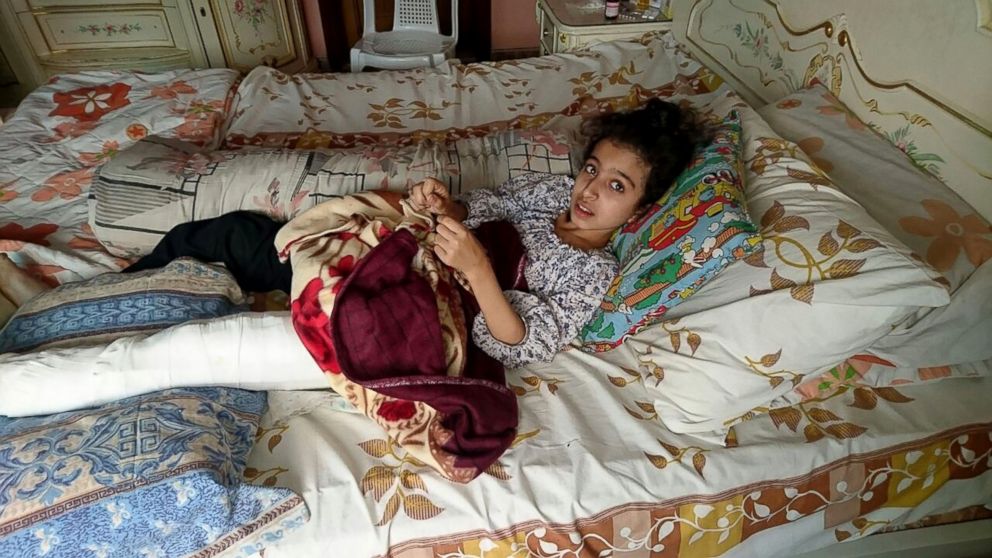9-Year-Old Girl Evacuated From Madaya After Being Shot by Sniper
She was able to leave town after her predicament became known on social media.

— -- She was shot two weeks ago, while walking with her sister to buy medicine for her mother. Suddenly she heard the shot and felt the pain in her thigh.
Ghina Wadi, 9, was rushed to the only remaining field clinic in the besieged town of Madaya in Syria, her thigh bone shattered from the gunshot. Her bones were already crumbling after a year of siege-inflicted malnutrition, according to the medic who treated her. Ghina was now in constant agony, but there just aren’t enough pain killers left in town.
The 43,000 people in Madaya are dependent on humanitarian aid deliveries of food and medicine and the last one was in June, the Madaya Medical Committee said in a statement.
“We now know what birds feel like during hunting season” locals told ABC News, adding that the sniper who shot Ghina is part of the pro-Assad Lebanese militia group Hezbollah.
For days, locals called on government authorities to allow Ghina to leave the town to get the complex surgery she desperately needed. Their requests were denied.
Instead, media activists did what they have done since dozens of people starved to death in January: they launched a social media campaign Thursday, and within 48 hours, more than 34,000 people have used the hashtag #SaveGhina, supported by a call by Amnesty International and the United Nations.
The social media campaign worked. Ghina was handed to the Syrian Red Crescent at the checkpoint sealing off Madaya on Saturday, carried on a wooden stretcher by volunteers. Her mother was allowed to accompany her to the hospital and her surgery was successful.
Thirteen other individuals in dire need of medical evacuation remain in Madaya, per local medical sources, including Nisrine Chamaa, 22, and Yaman Ezzedine, age 11.
Medics said 45 people are also suffering from typhoid.
Since the start of the siege in July 2015, more than 86 people have died from preventable diseases, including 65 from malnutrition and starvation, according to a report by Physicians for Human Rights (PHR) and the Syrian American Medical Society (SAMS).
Madaya has received four humanitarian aid convoy deliveries since the start of the year, more than any other besieged area in the same period of time, though, according to PHR, “none included adequate food or medical aid.”
Around 600,000 people live in 18 besieged areas in Syria and starvation is being used as a “weapon of war," the UN said.
“The vast majority of these innocent civilians are besieged by the regime using near-identical tactics: they surround a city, cut off humanitarian aid, and give civilians inside three choices: starve, be bombed, or surrender,” Samantha Power, the U.S. ambassador to the UN, said at a meeting last week.
“Of course it is not just the regime that besieges civilians. Some 110,000 civilians are besieged by [ISIS] in Deir az Zour, and more than 20,000 people are besieged by opposition groups Fuaa and Kafraya," she added.
Negotiations are currently ongoing to secure the medical evacuation of the 13 urgent cases out of Madaya in exchange for the evacuation of 14 civilians from pro-regime areas Fuaa and Kafraya, local authorities said.